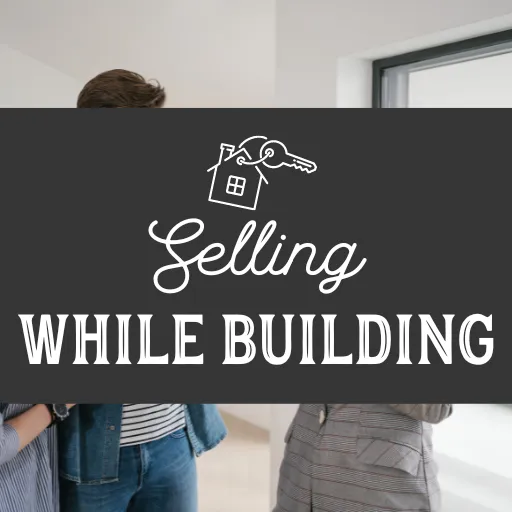Education& Resources helping homeowners and builders make informed choices about Building homes that last
Our ultimate goal is to create a community of builders and homeowners who are dedicated to improving the quality of life in their neighborhoods and communities.
Education& Resources helping homeowners and builders make informed choices about Building homes that last
Our ultimate goal is to create a community of builders and homeowners who are dedicated to improving the quality of life in their neighborhoods and communities.

Understanding High-Performance Windows: What You Need to Know
Hey, everybody! It’s TJ with Sanctified Homes, and today we’re here with Steve from Lindsay Windows at our latest project site, The Bushel Hill Haven. We’re diving deep into what makes high-performance windows essential for energy-efficient, comfortable, and durable homes. Windows may seem simple, but they’re actually complex, with tons of factors influencing how they perform. Let’s break down everything you need to know to make an informed choice.
Why High-Performance Windows Matter
High-performance windows are more than just glass—they are engineered systems that keep homes energy-efficient and comfortable year-round. When selecting windows for a custom home, the right choice can drastically improve your home’s thermal efficiency, reduce noise, and enhance indoor air quality.
We often see people overlook window quality, opting for whatever option their builder or contractor selects. But given how much heat gain and loss occurs through windows, it’s worth understanding the specs that make a high-performance window.
Key Features to Look for in High-Performance Windows
Here are some critical factors you’ll see on any high-performance window label. Let’s break down what they mean and why they matter.
1. U-Factor: Measures Heat Transfer
The U-factor indicates how well a window keeps heat inside. Lower numbers are better because they signify greater insulation and energy efficiency. For our Bushel Hill Haven project, we chose windows with a U-factor of 0.22. To put this into perspective, most standard windows only meet a minimum U-factor standard, meaning these high-performance windows will help lower energy costs and maintain a stable indoor temperature.
2. Solar Heat Gain Coefficient (SHGC): Controls Solar Energy Entry
SHGC measures how much solar energy passes through the window. In warmer climates, a low SHGC is preferred to reduce heat gain, keeping cooling costs down. For colder climates, a slightly higher SHGC might help warm the home during the winter. We generally recommend a lower SHGC since it reduces indoor temperature fluctuations and protects furniture from UV damage.
3. Visible Transmittance (VT): The Amount of Natural Light
Visible transmittance tells you how much natural light passes through the window. Higher VT values mean more natural light, but each layer of coating applied to the glass can lower this number. At 0.46, these windows still allow a good amount of sunlight to pass through without the risk of overheating the space.
4. Air Leakage: Keeping Drafts at Bay
Air leakage is one of the lesser-known but crucial aspects of window performance. It measures how much air (in cubic feet per minute) can leak through a window. Lower numbers mean fewer drafts and better insulation. Our chosen windows test at 0.01 CFM—significantly below the industry standard of 3 CFM. This ultra-low leakage rate is essential for energy efficiency and comfort.
Advanced Window Technology in Action
For this home, we chose Low-E (low emissivity) glass with a 366 neat coating and i89 option. Here’s what that means:
Low-E 366 Neat Coating: The outer glass layer has a triple-layer Low-E coating to block UV rays, reduce heat gain, and make the glass surface stay cleaner for longer.
i89 Indium Coating: This inner coating reflects heat back into the home during winter, helping to maintain indoor temperatures and reduce heating costs.
These options mean that not only do these windows reduce heat gain from the outside, but they also help keep indoor warmth from escaping.
How Glass Type Influences Energy Efficiency
Different glass types influence performance. Lindsay Windows provides various glass coatings, like Low-E 180, Low-E 270, Low-E 366, and even a more advanced Low-E 452. These options allow us to customize windows for maximum performance based on the home’s orientation, climate, and your personal preferences.
For instance:
In a south-facing room where there’s intense sunlight, a higher Low-E coating will reduce the solar heat gain.
On the north side with minimal sun exposure, a lower Low-E coating may be ideal to allow for more natural warmth during the winter.
Real-World Benefits of High-Performance Windows
So, why does all of this matter? High-performance windows improve comfort and efficiency while lowering energy costs. Here are some specific benefits you’ll enjoy with high-quality, well-sealed windows:
Better Indoor Air Quality: With low air leakage rates, pollutants and allergens stay outside, contributing to healthier indoor air.
Lower Energy Bills: Efficient windows reduce your reliance on heating and cooling systems, cutting energy costs significantly.
Increased Comfort: Properly selected windows reduce drafts and prevent overheating, making for a more consistent indoor environment.
Noise Reduction: High-performance windows have superior soundproofing qualities, which is particularly valuable in noisy neighborhoods.
Choosing the Right Windows for Your Build
When selecting windows, remember that it’s about more than aesthetics. Ask your builder or window supplier the following:
What’s the U-factor and SHGC for these windows?
Is there an option to customize the Low-E coating based on window placement and sun exposure?
What’s the air leakage rate?
Properly researching these specs will help you make an informed decision and ensure your home stays comfortable and efficient.
Conclusion
High-performance windows are an investment that pays off in comfort, efficiency, and value. By selecting the right glass type, coatings, and ensuring proper installation, you can significantly enhance your home’s durability and sustainability. Windows may seem simple, but their role in a home’s performance is anything but basic.
If you have questions about high-performance windows or want to explore options for your new build or remodel, feel free to reach out. And, as always, don’t forget to raise your standard! We’ll talk to you soon.

Home Building Checklist
We understand that the process of building comes with a lot of decision-making. So we created the Home Building Checklist to guide your decision-making process, and it's yours for free here!
WHAT WOULD YOU LIKE TO LEARN?
How can we help?







Why You Will Love Working With Us


Transparency
Honesty is always the best policy, and this is the policy we swear by. We aim to be as transparent as possible with our clients when building their homes.
- We have no hidden fees or surprises.
- We disclose every invoice and bid because we have nothing to hide.
- We are upfront about all costs, including the price or materials and labor costs, so you can trust every dollar of the process.

Experience
Our team has over 25 years of experience in construction and design, so we know how to make your dream home a reality.
- Over 200 homes build with our combined expertise!
- 25 years experience in
Parade of Homes - Builder Of the Year with Madison Area Builders Association
Ultimately, we believe in raising standards
We believe that by helping to create a community of builders and homeowners who are dedicated to improving the quality of life in their neighborhoods and communities, we can help to create a more equitable and inclusive society.
We want to empower homeowners to become involved in the process of creating their own safe and beautiful living environments.
We also want to give builders the opportunity to make a lasting and positive impact on the community by providing quality homes and neighborhoods. By working together, we can help create a better future for everyone involved.

The Blessed to Build Foundation is a 501(c)3 Non Profit providing education & resources to help homeowners and home builders make informed choices about building homes that last.
Dane County, Wisconsin
Hire a Builder
If you are looking to build a new home in the following cities, connect with Sanctified Homes & Construction to start the conversation.
Copyright Blessed to Build Foundation, Inc. 501(c)3

